Inhaler Devices
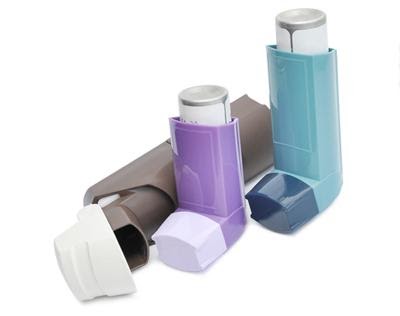
 METERED DOSE INHALERS (MDIs)
METERED DOSE INHALERS (MDIs)
Metered dose inhalers (MDIs) are the conventional inhalers and are more popular amongst the patients. An MDI consists of a pressurized canister containing medicine that fits into a boot-shaped plastic mouthpiece. When the canister is pressed down, a measured dose of medicine comes through the mouthpiece. MDIs require good technique and coordination by pressing down on the canister and breathing in at the same time.
 TURBUHALER
TURBUHALER
A Turbuhaler is a handheld dry powdered inhaler device that delivers medication to the airway and lungs as the patient inhale through it. It is breath-activated, which means when the patient inhales on the mouthpiece, the device automatically releases the medicine to the patient. When inhaled correctly, the Turbuhaler can deliver medication deep into your lungs, giving the medication a better chance to reach the small airways. This increases the medication’s effectiveness.
It has a dose counter you can see how many doses you have got left. When you see the dose indicator turn red it is time to get a new turbuhaler.
The portable size, efficiency and convenience make the Turbuhaler® a desirable method for inhalation treatment.
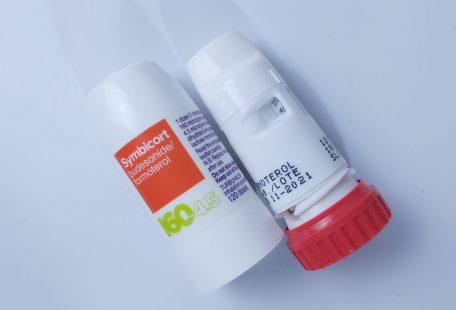
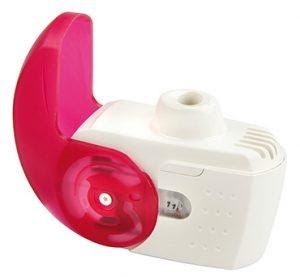
 NEXThaler
NEXThaler
The NEXThaler is a medication-preloaded, breath-activated device. When the patient opens the cap and breathe in through the mouth piece, NEXThaler will release the right dose of medication as indicated. MEXThaler inhalers deliver the medicines in a dry-powdered form.
 DISKUS
DISKUS
A Diskus is a flat, round inhaler that is used to inhale medicines in powdered form. A Diskus is breath activated inhaler which means when the patient inhale, the device automatically releases the medicine. It has a dose counter so that the patient can see the doses remaining.
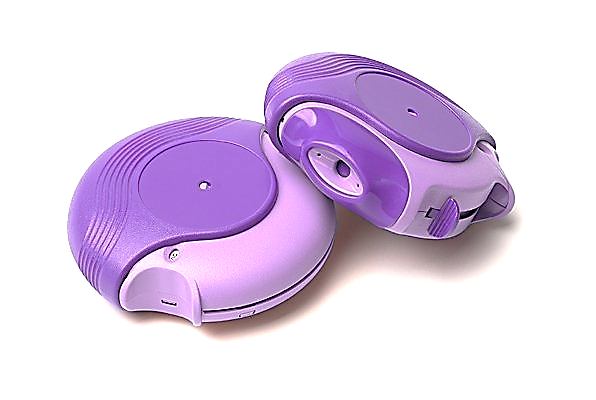
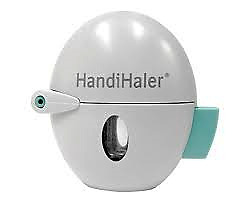
 HANDIHALER
HANDIHALER
The Handihaler is a breath-activated dry powdered inhalation device. Medications are in capsule form, and every time the patient need to insert the medicated capsule inside the Handihaler and fix it, before inhalation. When the patient breathes in through the mouth piece, it will release a dose of medication to the patient.
 RESPIMAT
RESPIMAT
The RESPIMAT device delivers medication in the form of mist. Upon the activation of the device for inhalation, the liquid form of medication inside is converted to a fine mist, which is then inhaled. The patient needs some co-ordination, to press the button slowly and breathe in at the same time.
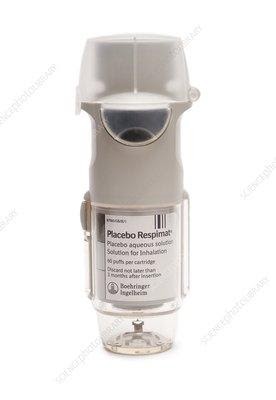
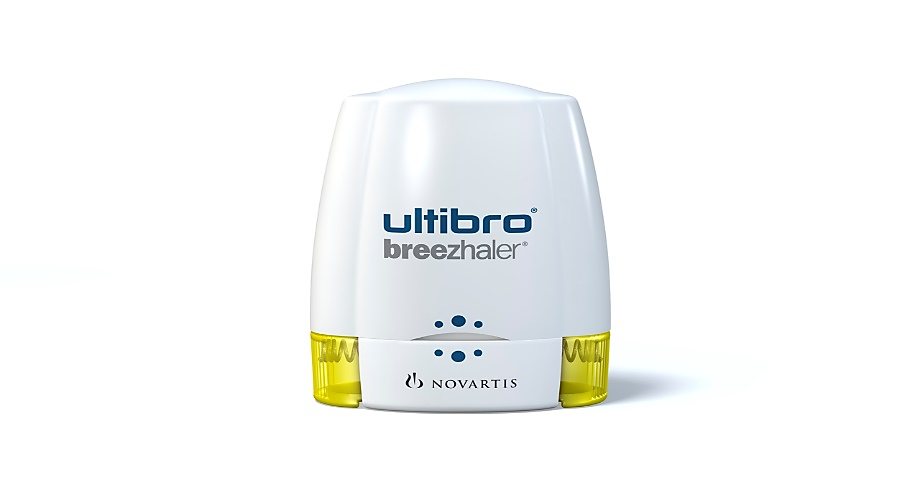
 BREEZHALER
BREEZHALER
The Breezhaler is a breath-activated dry powdered inhalation device. Medications are in capsule form, and every time the patient need to insert the medicated capsule inside the Breezhaler and fix it, before inhalation. When the patient breathes in through the mouth piece, it will release a dose of medication to the patient.
 ELLIPTA
ELLIPTA
The Ellipta inhaler is a medication-preloaded, breath-activated device. When the patient opens the cap and breathe in through the mouth piece, Ellipta will release the right dose of medication as indicated. Ellipta inhalers deliver the medicines in a dry-powdered form.
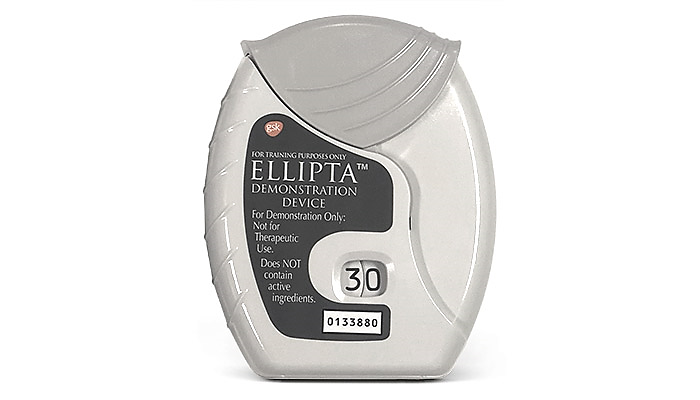
 DO’s and DON’Ts
DO’s and DON’Ts
 Asthma can’t be cured, but its symptoms can be controlled. Because asthma often changes over time, it’s important that you work with your doctor to track your signs and symptoms and adjust treatment as needed.
Asthma can’t be cured, but its symptoms can be controlled. Because asthma often changes over time, it’s important that you work with your doctor to track your signs and symptoms and adjust treatment as needed.
The key to living with asthma successfully is to keep it under control. Limit contact with asthma triggers in your environment, monitor your condition with a peak flow meter, and follow your treatment plan strictly.
Work on reducing asthma triggers. A first step is to stop smoking and protect yourself from second-hand smoke in your home and in public places.
It is possible to be active and stay healthy when you’re living with asthma. In fact, many medal-winning Olympic athletes have asthma. Exercise strengthens your respiratory muscles, helps maintain weight. Exercises that are less likely to trigger asthma symptoms include swimming, walking, hiking, and leisurely biking. Sports that have short bursts of activity are also less likely to set off symptoms. Examples include baseball, football, and sprinting.
You may have to pace yourself at times or make some adjustments here or there, such as avoiding outdoor sports in the early morning, when pollen counts are at their highest (assuming pollen is one of your triggers).
Stress can be a trigger for asthma attacks. With that in mind, commit to implementing stress-reduction strategies into your life, such as breathing exercises, meditation, and other tactics.
Stay mindful of your emotional state. People with asthma may be more likely to develop anxiety or depression. If you begin to feel down or depressed, talk with your doctor. Help is available.
Asthma presents a number of day-to-day challenges that need to be overcome. Take steps to make it easier for you to commit to these.
Simply checking and recording peak flows once per day could make a big difference in your asthma control. A low number can indicate you may be headed toward an asthma attack.
Learn how to use your medications correctly. Find out all you can about your asthma medicine, including how and when to take it, potential side effects, and how it controls your asthma. If you use a metered dose inhaler, learn how to use it properly.
Talk to your doctor about adjusting your routine if compliance is becoming an issue or you are experiencing side effects.
Not having your rescue inhaler immediately available can be dangerous. Because you have no idea when you might need it, consider keeping a spare in your backpack, purse, desk, or any place Even people who take their asthma medicine exactly as prescribed and who work to avoid triggers can have the occasional asthma attack. It’s essential to have an asthma action plan in place for those times. This will include symptoms to look for, actions to take, danger signs, avoiding triggers, medication instructions, and when to call your doctor or go to the emergency room.
Useful Material
Metered dose inhalers
Coming Soon
Turbuhaler
Coming Soon
Handihaler
Coming Soon
Respimat
Coming Soon
Breezhaler
Coming Soon
Ellipta
Coming Soon
CONNECT WITH THE LEADERS IN THE SOCIETY






